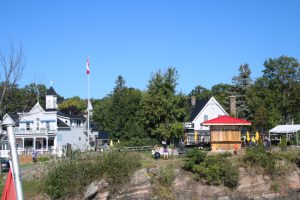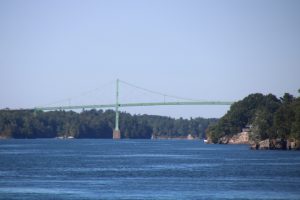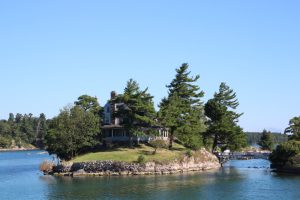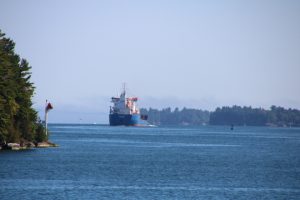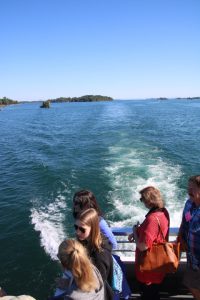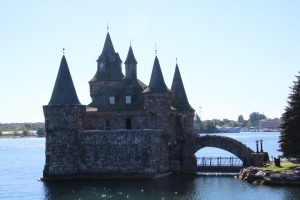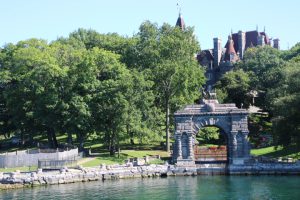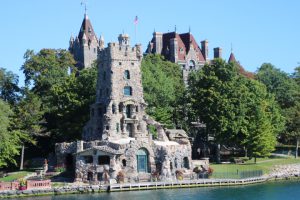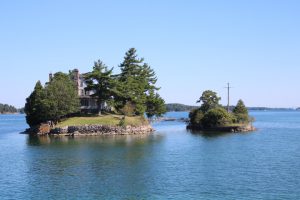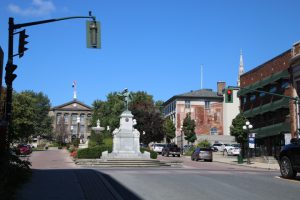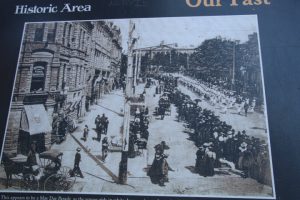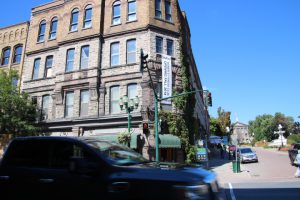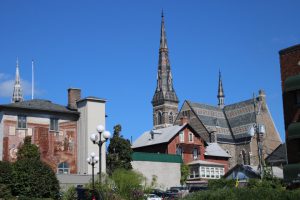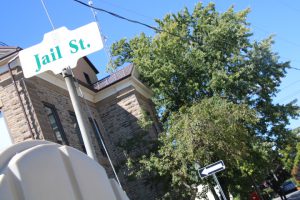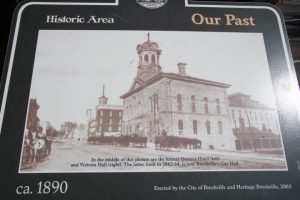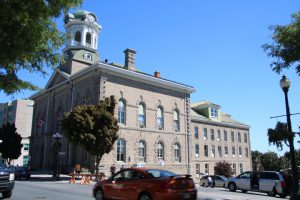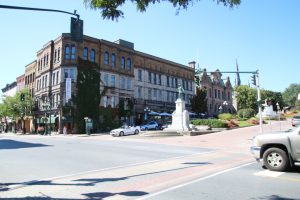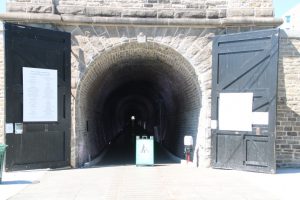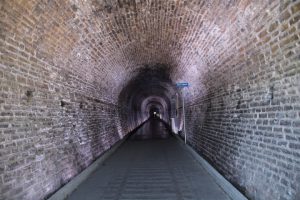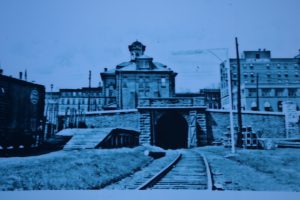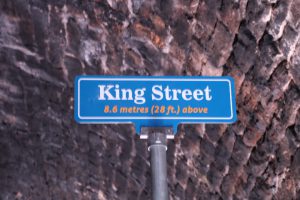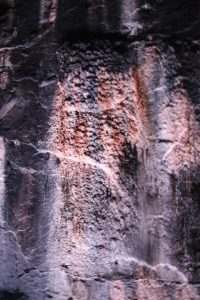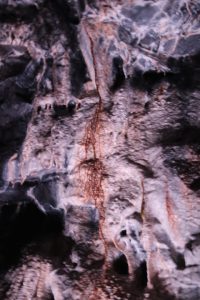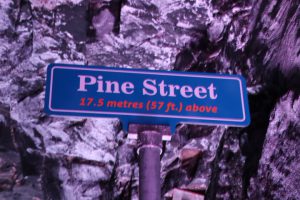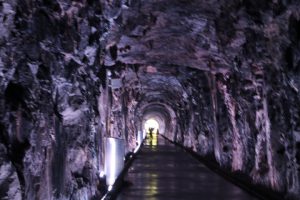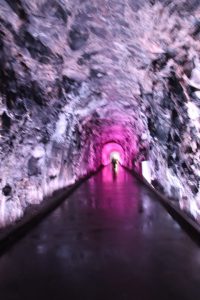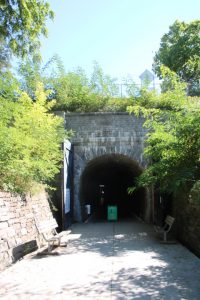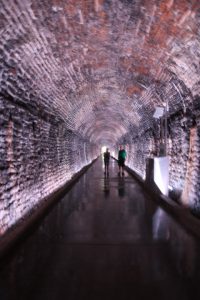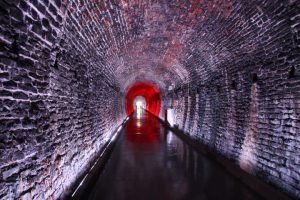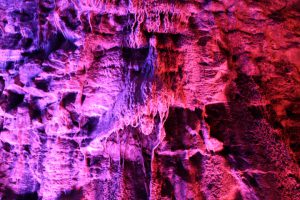Today by way of the first cruise boat we toured the Thousand Islands in the St. Lawrence River where it exits Lake Ontario. The cruise of one hour took us past lots of the islands, many of them with houses on them. All of them are granite roche moutonnes (sheep rocks) which were sculptured by the moving ice from roughly east to west during the last Ice Age. These are also found on land here but the beauty is that the islands stick out of the water which is very deep and that gives an idea as to the thickness of the ice at that time. The ice went on to sculpture the five Great Lakes.
Boldt Castle was built upon one of these islands and nearby was another large house connected to a smaller island by a bridge. This bridge is claimed to be the smallest international one as the border between the USA and Canada bisects it.
After lunch in the town centre we toured the centre identifying imposing 19th century buildings and their contemporary black and white photographs on information boards.
Soon our explorations took us to the Brockville Railway Tunnel which was constructed between 1854 – 1860. It is 1/2 km long and was Canada’s first railway tunnel. The railway itself (Brockville and Ottawa) was designed to link the Ottawa River near Ottawa to the St. Lawrence so that the then lucrative timber trade could export lumber harvested near Ottawa and Wakefield Quebec by ship from Brockville. The tunnel was needed to get under the high ground upon which the town centre stands and enable the railway to reach the docks. It was reopened as the Railway Tunnel Park for Canada’s 150th birthday in August 2017. It has an amazing lighting and sound system some of which represents trains rushing through. From the dockside the first section of the tunnel was built as cut and cover, in other words a big ditch was dug, the arch roof was built and the soil and rocks put back on top. Under the highest part of the town the granite rock did not need supporting. It took so long to construct that by the time the final section was being built the Greathead Shield was invented. An early version of this enabled the tunnellers to work in the protection of a timber tunnel shape which enabled bricks to be stuck in place to form the walls and arch. Groundwater seeps through the walls and the sedimentary rocks above the granite which washes out minerals to produce amazing formations in the unsupported central section.
